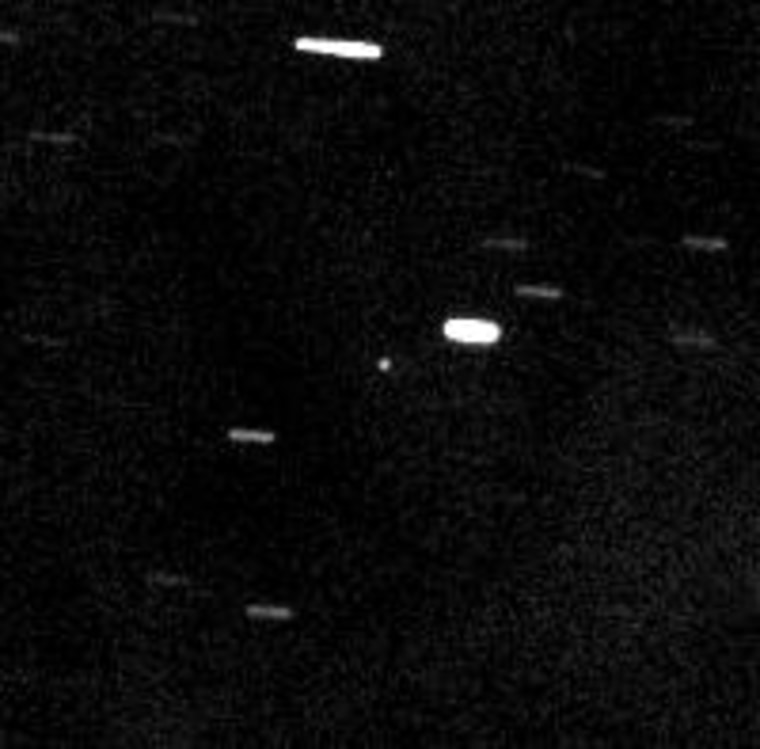A very small asteroid was detected Monday on a course heading for Africa, and observers reported that the object apparently burned up in the atmosphere.
By all accounts, the boulder-sized object did not strike Earth itself.
The event marked the first time an asteroid's fall toward Earth was predicted in advance, astronomers said.
The space rock, designated asteroid 2008 TC3, was thought to be 3 to 15 feet (1 to 5 meters) in diameter and posed "no risk to those on the ground," said David Morrison of NASA's Ames Research Center. A similar-sized object during the day would have likely gone unnoticed, he said.
Astronomers predicted that the fiery entry would appear like a very bright shooting star known as a fireball or bolide.
"A typical meteor comes from an object the size of a grain of sand," Gareth Williams of the Minor Planet Center in Cambridge, Mass., said Monday. "This meteor will be a real humdinger in comparison!"
SpaceWeather.com quoted Dutch aviation meteorologist Jacob Kuiper as saying that an airline crew witnessed a flash that matched the expected coordinates for the fireball.
"Half an hour before the predicted impact of asteroid 2008 TC3, I informed an official of Air-France-KLM at Amsterdam airport about the possibility that crews of their airliners in the vicinity of impact would have a chance to see a fireball. And it was a success!" Kuiper told SpaceWeather.com.
"I have received confirmation that a KLM airliner, roughly 750 nautical miles southwest of the predicted atmospheric impact position, has observed a short flash just before the expected impact time 0246 UTC," Kuiper was quoted as saying. "Because of the distance it was not a very large phenomenon, but still a confirmation that some bright meteor has been seen in the predicted direction."
The object was discovered by an ongoing survey at Mount Lemmon run by the University of Arizona. The atmospheric entry was to occur at 10:46 p.m. ET Monday (0246 UTC or 5:46 a.m. local time Tuesday) over northern Sudan, according to Steve Chesley of NASA's Jet Propulsion Laboratory.
"We're eager for observations from astronomers near the asteroid's approach path. We really hope that someone will manage to photograph it," Williams said.
Based on 26 optical observations, "the probability of impact is between 99.8 percent and 100 percent," Andrea Milani of the University of Pisa said Monday.
Milani continued: "The effect of this atmospheric impact will be the release, in either a single shot or maybe a sequence of explosions, of about 1 kiloton of energy. This means that the damage on the ground is expected to be zero."
This report was supplemented by msnbc.com.
